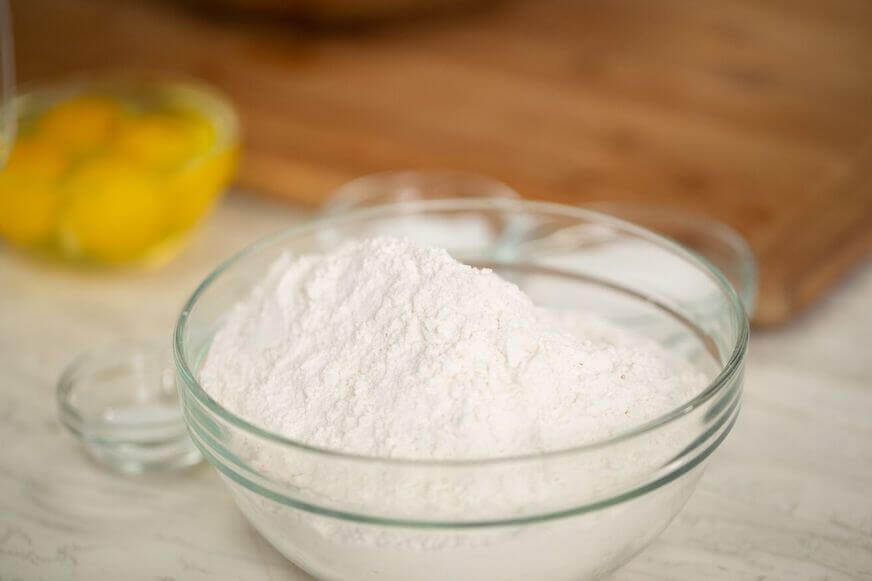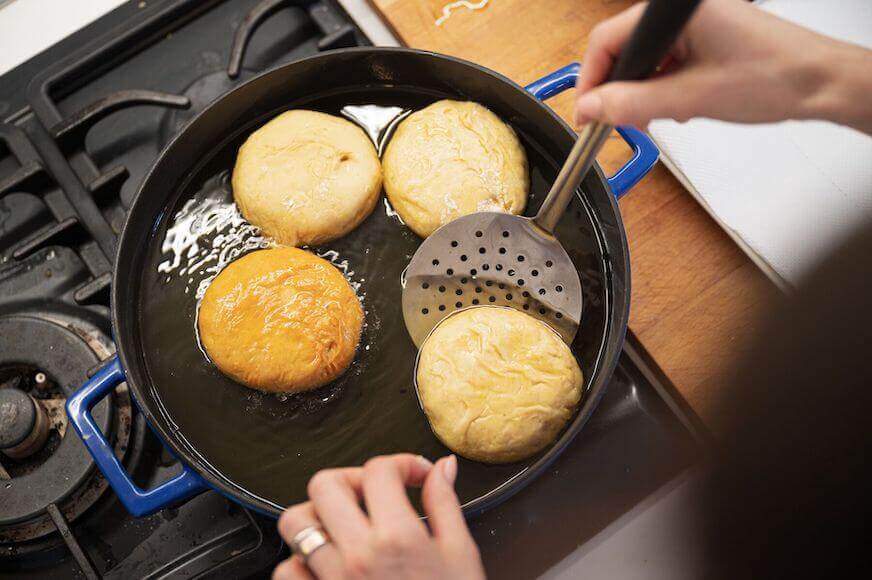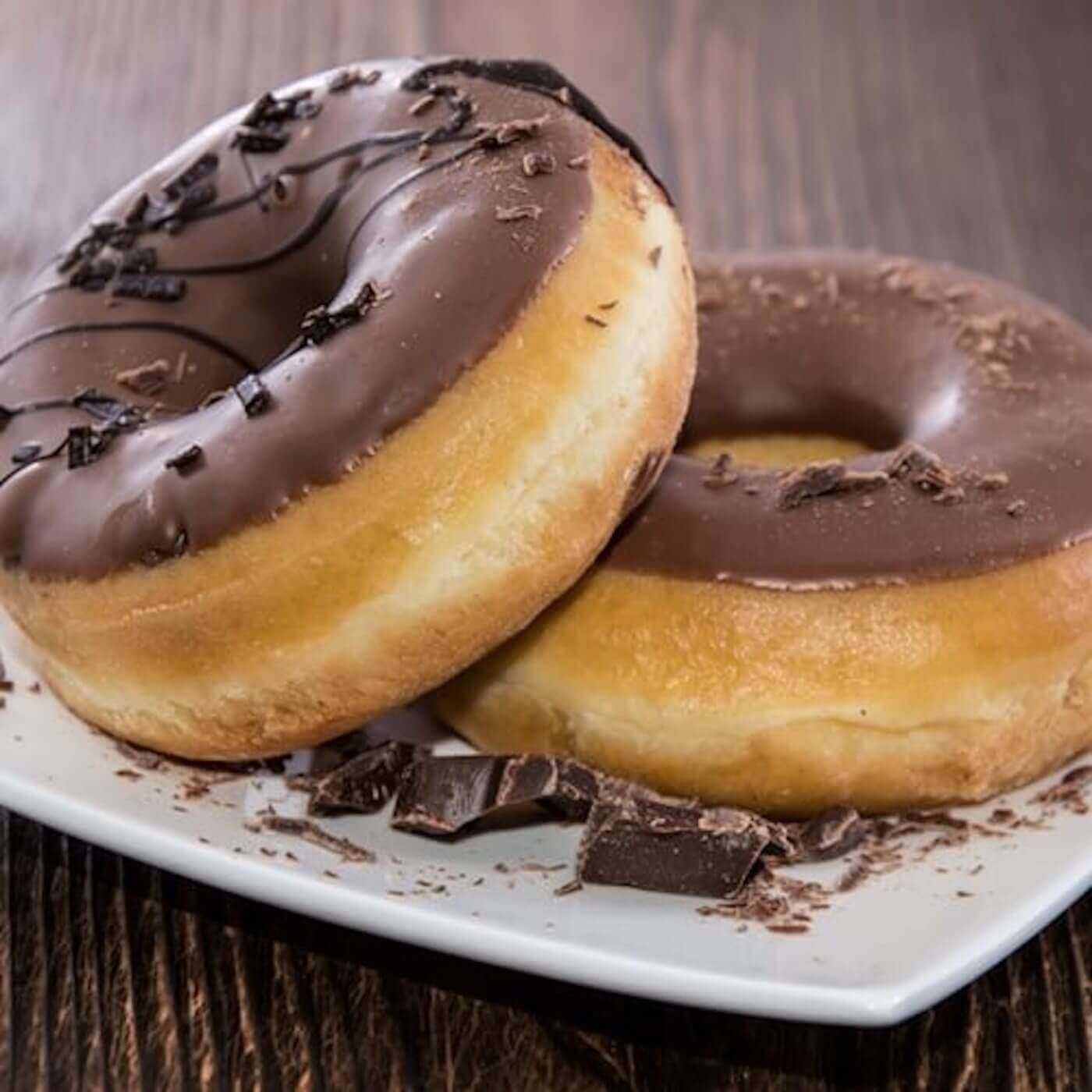Everything You’ll Need To Make Perfect Doughnuts
What’s not to love about the doughnut (or donut, depending on who you ask)? With an airy interior that’s reminiscent of a billowy cloud and a flavor that’s sweet but not cloying, this iconic treat is equally at home beside a tall glass of milk as it is next to a steaming mug of coffee.
While loving the doughnut is easy, learning how to make these treats at home is a bit more complicated.
No matter if you like your doughnuts with a simple dusting of sugar, drenched in chocolate, or topped with ingredients like bacon or green tea, you’ll need to start with a few key ingredients and tools. So grab the necessities and get ready to develop your cooking skills further and test your abilities in the kitchen.
Essential Doughnut Ingredients
While doughnuts range from simple glazed rings to fritters filled with fruit and spice, all of these delectable treats start with similar ingredients. So no matter what type of doughnut you’d like to make, you should start with the following.
Flour
As is the case for any food that starts with a dough, flour is a crucial part of the doughnut. All-purpose flour works well for doughnuts since it has a moderate amount of gluten–the binding protein commonly used in baking. This gluten content helps create a dough that is strong enough to trap air, which helps create the fluffy doughnut texture we all love.
Bread flour can also work well for fried donuts, and cake flour is the best bet if you’d like to try your hand at making cake doughnuts.
Yeast
Yeast is a tiny yet magical organism that helps doughs of all kinds rise. Without yeast, your doughnuts might resemble dense disks rather than fluffy rings.
There are a variety of types of yeasts available for purchase, and some bakers even capture native yeasts to create their own unique doughnut dough. However, most home bakers can use a commercially available baker’s yeast.
Since yeast is a living organism, it’s important to treat it carefully. If you expose it to temperatures that are too hot, it can die—but cold temperatures mean the yeast will act sluggish, and you will be left with a dough that’s slow to rise.
Sugar
Who could forget the sweet part of doughnuts? Sugar not only adds a touch of sweetness to the dough, but it also provides fuel for the yeast to consume.
Granulated white sugar is often used in doughnut recipes, but pure cane sugar or brown sugar can also work well.
Milk
The majority of yeasted doughnut recipes include milk. This liquid helps bind the dry ingredients together while also adding richness to the dough. When it comes time to choose your dairy, stick with whole milk rather than skim or low-fat.
The lactose present in milk also helps sweeten the dough and acts as a food source for the yeast to consume.
Eggs
In addition to gluten, eggs help bind a doughnut dough together, while also providing a bit of flavor. Large eggs work best in most recipes.
Oil
Oil allows you to fry your little dough pillows and turn them into fluffy rounds! Since you’ll want the flavor of the dough and toppings to shine, you’ll want to choose a neutral-tasting oil. You should also choose an oil with a higher smoke point, to prevent the development of off-flavors during the frying process.
Some types of oil that work well for frying doughnuts include refined vegetable oil and refined canola oil.

Flour and eggs are two key doughnut ingredients.
Doughnut Tools and Equipment
After you gather the proper doughnut ingredients, you’ll also want to ensure you have the necessary tools to make your doughnuts. While you can get by without some specialized pieces of equipment, the following are typically necessary.
Candy Thermometer
Frying any item, including doughnuts, is a precise science. If the oil is too hot, the doughnuts can burn or cook unevenly. And if the oil isn’t hot enough, the doughnuts will probably fail to develop their beautiful golden brown color.
A candy thermometer can measure temperatures up to 400ºF, which means you can use it to read the oil’s temperature. A basic stainless steel dial-type thermometer works just fine, but a digital candy thermometer is also an option.
Baking Scale
Since baking is a science as well as an art, precise measurements are a key component of obtaining delicious results. Many bakers find that it’s more accurate to measure by weight rather than volume, which makes a kitchen scale a must-have tool.
Rolling Pin
When it’s time to form your dough into the rings and circles you love, turn to the rolling pin. This simple kitchen tool allows you to shape your dough into a uniform sheet, which allows you to create doughnuts that are consistent in size. And that means even cooking!
Wooden, nylon, or aluminum tools can all work well, so find what feels best for you.
Saucepan
Dealing with hot oil is no small matter, and it’s crucial that you have the right tools on hand before you begin deep frying. One of the most important pieces of equipment is a stable saucepan.
The pan should be deep enough to hold at least two quarts of oil and wide enough to hold three doughnuts without touching. You’ll also want to look for a material that retains heat well, such as cast iron or ceramic. These materials also happen to be on the heavier side, which can prevent you from accidentally sending hot oil all over your kitchen.
Cookie Cutter
Of course, you’ll want to have a circular cookie cutter or a glass for the final product!
Culinary & Pastry Career Survey
Culinary & Pastry Career Survey
What's your ideal culinary career? Answer 20 simple questions and see if your dream career gets revealed to you.

We’ve compiled of all of the essential questions into one handy guide: Career options, description of skill requirements, and more!


How to Make Doughnuts
Once you’ve gathered the necessary ingredients and supplies, you can begin making your doughnuts! This basic donut recipe is a good place to start.
Ingredients
- 1 cup whole milk
- ¼ cup plus 1 tsp granulated sugar, divided
- 1 packet (or 2 ¼ tsp) active dry yeast
- 4 ¼ cups all-purpose flour, plus more for surface
- 1/2 tsp kosher salt
- 6 tbsp butter, melted
- 2 large eggs
- 1/2 tsp pure vanilla extract
- Oil, for frying
Instructions
- Heat the milk until lukewarm, add yeast, and stir. Allow the mixture to sit until the yeast is bubbling, about five minutes.
- Beat the yeast mixture with the eggs, sugar, butter, and salt. Slowly add the flour and mix until the dough cleanly pulls away from the sides of the bowl.
- Grease a large bowl and place the dough into the bowl. Cover with plastic wrap and let rise until doubled in size, about one to two hours.
- Empty the dough onto a lightly-floured counter and roll it into a ½-inch thick sheet. Cut the doughnuts out using a cookie cutter or glass. Gather the scraps, reroll as gently as possible, and repeat until the dough is used up.
- Place the doughnuts on a floured baking sheet and let rise for about one hour.
- Heat oil in a heavy saucepan over medium-high heat. Use a candy thermometer to check that the temperature is at 375ºF. Adjust the burner heat up or down as necessary.
- Carefully add the doughnuts to the oil, while making sure to not crowd them in the pan. Once the bottoms are golden brown (after about one minute), flip the doughnuts over and cook for an additional 45 seconds.
- Remove the doughnuts from the oil and place on a baking rack to cool.

Removing your doughnuts at just the right time creates a golden color.
Keep Your Culinary Knowledge Rolling
After you’ve rolled out doughnuts and turned them golden in the fryer, it’s time to move on to your next kitchen project! Perhaps you’d like to learn how to make sticky buns with pecans. Or maybe you’d like to venture into the savory world and whip up some burritos.
No matter which kitchen skills you’re interested in exploring, it can help to have some guidance along the way. Escoffier’s Home Gourmet online cooking classes can allow you to dive into a variety of cooking techniques and dishes, and reach out to a professional Chef Instructor when you need some help.
And if you find you’d like to take your culinary education even further, Escoffier offers online and in-person programs in the Culinary Arts and Baking and Pastry Arts.
The article was originally published on October 6, 2015, and has since been updated.


